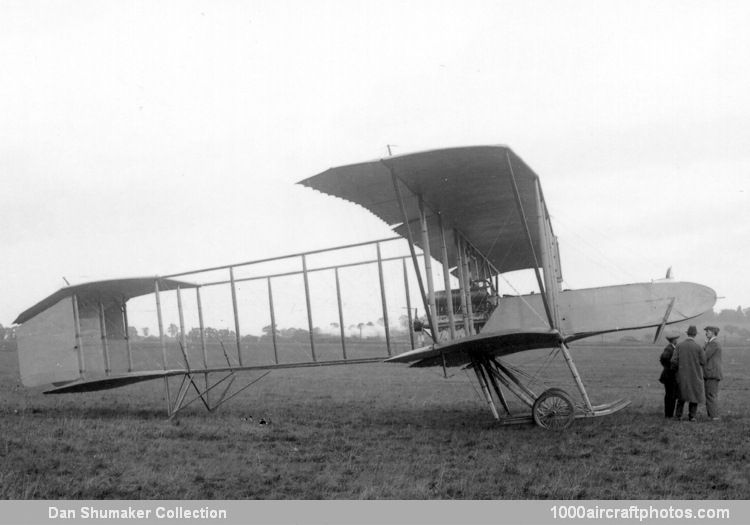The five-seat pusher biplane Charabanc was of wooden construction covered with fabric and the 120 hp Austro-Daimler engine used provided adequate power for weight lifting. The aircraft proved to be very successful indeed, and commenced a useful career of passenger flying at Hendon by setting up a world record on September 22, 1913, when Noel took off with seven others on board and remained aloft for 17 min 25 sec. Just over a week later, on October 2, the same pilot bettered this achievement by cramming nine passengers into the nacelle and staying airborne for 19 min 47 sec.
For the purpose of making an attempt on the 1913 Michelin Cup No. 1 and to achieve all-British status, the Austrian engine was replaced later in the month by the 100 hp six-cylinder Green from the biplane in which Samuel Cody crashed fatally. The modification proved worthwhile for, on November 6, R.H. Carr won the Cup and its accompanying £500 prize by covering the minimum 300 mls (483 km) stipulated flying to and fro between Hendon and Brooklands (a 40 mls, 64 km round-trip).
Six months afterwards, on May 9, 1914 W. Newell was taken up over Hendon in the Charabanc where he made the first parachute descent in Great Britain from an aeroplane. R.H. Carr again piloted the aircraft, while the intrepid parachutist perched on the port landing gear skid, clutching his parachute in his arms. When the time came to jump he was pushed off by the foot of F.W. Goodden, who was sitting above him on the lower wing.
With its span of 62 ft 6 in (19.05 m) and a loaded weight of 3,100 lb (1,406 kg), the Charabanc was one of the largest British aeroplanes built before WW I. Seated in the prow of the long nacelle, the pilot had an excellent view. The passengers were accommodated behind him side-by-side on two rows of wicker seats. The engine was fitted with an effective silencer and, in keeping with its character, the Charabanc was equipped with a motor horn which could be heard from the ground when the machine was in flight."
